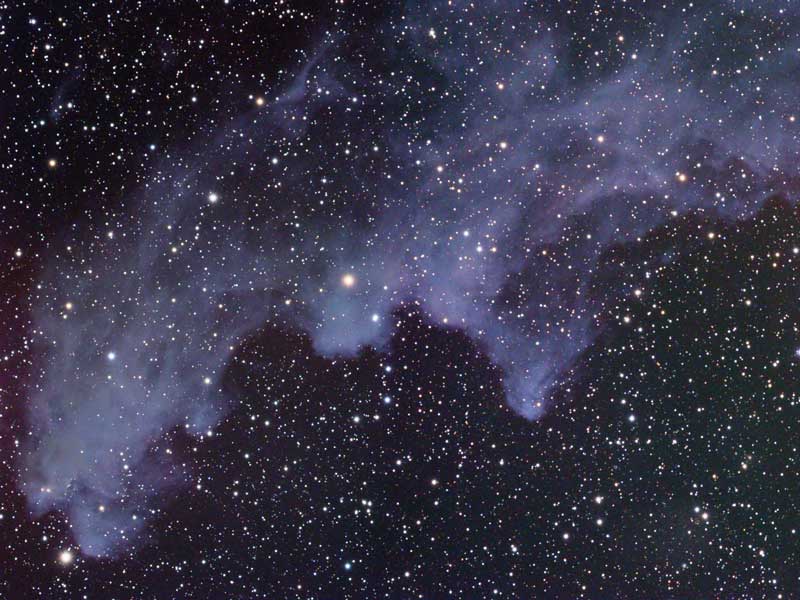
|
Credit & Copyright: Bernhard Hubl
Explanation:
Double, double toil and trouble;
Fire burn, and cauldron bubble -- maybe
Macbeth should have consulted the Witch Head Nebula.
This suggestively shaped
reflection nebula
is associated with the
bright star Rigel in the
constellation Orion.
More formally known as
IC 2118,
the Witch Head Nebula glows primarily by light reflected from
Rigel, located just outside the top right corner of the
above image.
Fine dust
in the nebula reflects the light.
The blue color is caused not only by
Rigel's blue color but because the
dust grains reflect blue light more efficiently than red.
The same
physical process causes
Earth's daytime sky to appear blue,
although the scatterers in
Earth's atmosphere are molecules of
nitrogen and
oxygen.
The nebula lies about 1000 light-years away.
|
January February March April May June July August September October November December |
| ||||||||||||||||||||||||||||||||||||||||||||||||
NASA Web Site Statements, Warnings, and Disclaimers
NASA Official: Jay Norris. Specific rights apply.
A service of: LHEA at NASA / GSFC
& Michigan Tech. U.
Based on Astronomy Picture
Of the Day
Publications with keywords: IC 2118 - Witch Head Nebula
Publications with words: IC 2118 - Witch Head Nebula
See also:
